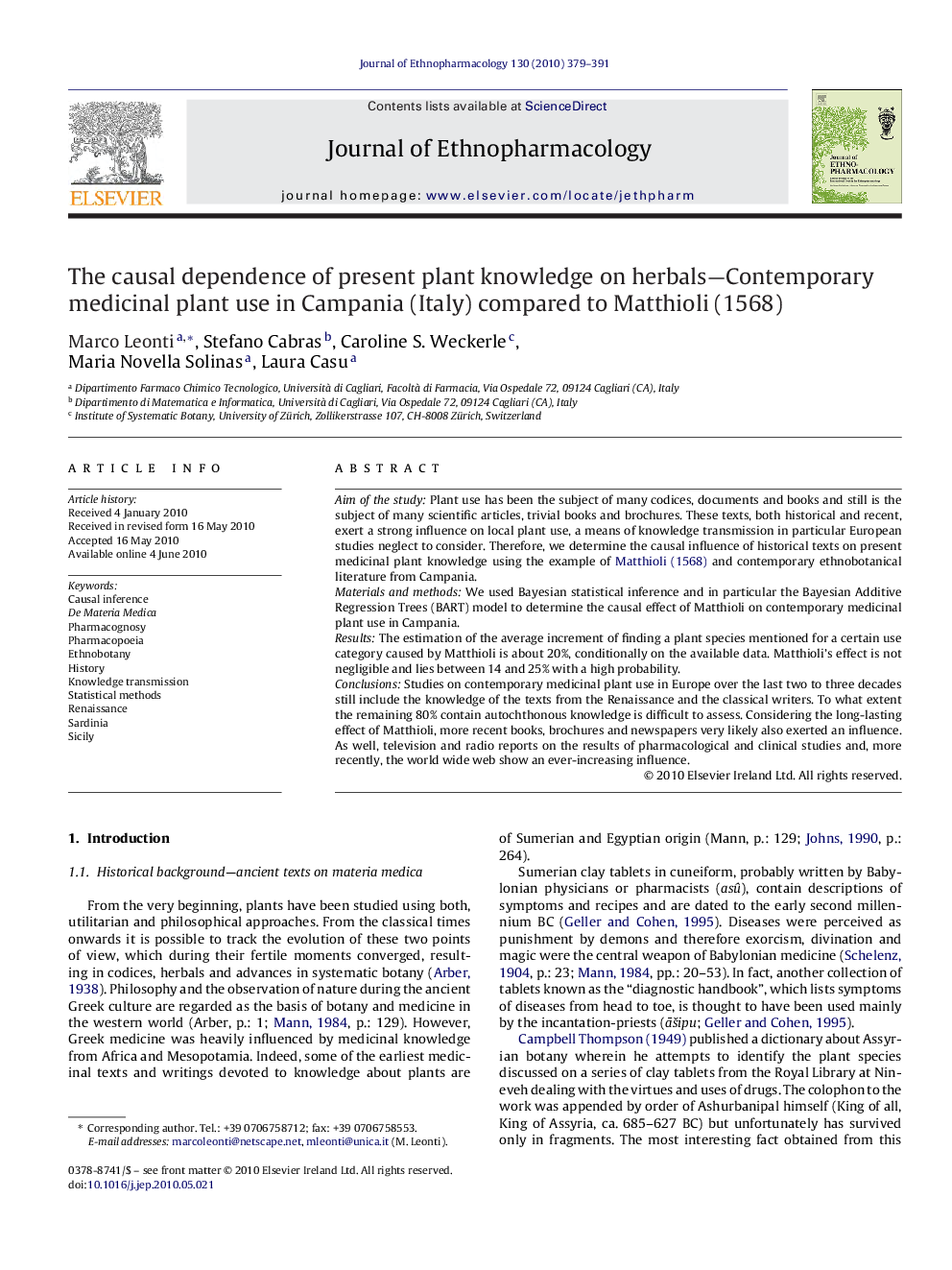| Article ID | Journal | Published Year | Pages | File Type |
|---|---|---|---|---|
| 2545962 | Journal of Ethnopharmacology | 2010 | 13 Pages |
Aim of the studyPlant use has been the subject of many codices, documents and books and still is the subject of many scientific articles, trivial books and brochures. These texts, both historical and recent, exert a strong influence on local plant use, a means of knowledge transmission in particular European studies neglect to consider. Therefore, we determine the causal influence of historical texts on present medicinal plant knowledge using the example of Matthioli (1568) and contemporary ethnobotanical literature from Campania.Materials and methodsWe used Bayesian statistical inference and in particular the Bayesian Additive Regression Trees (BART) model to determine the causal effect of Matthioli on contemporary medicinal plant use in Campania.ResultsThe estimation of the average increment of finding a plant species mentioned for a certain use category caused by Matthioli is about 20%, conditionally on the available data. Matthioli's effect is not negligible and lies between 14 and 25% with a high probability.ConclusionsStudies on contemporary medicinal plant use in Europe over the last two to three decades still include the knowledge of the texts from the Renaissance and the classical writers. To what extent the remaining 80% contain autochthonous knowledge is difficult to assess. Considering the long-lasting effect of Matthioli, more recent books, brochures and newspapers very likely also exerted an influence. As well, television and radio reports on the results of pharmacological and clinical studies and, more recently, the world wide web show an ever-increasing influence.
Graphical abstractFigure optionsDownload full-size imageDownload as PowerPoint slide
